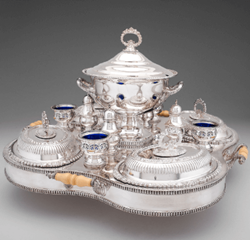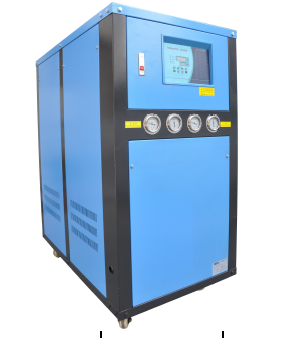Electrolytic treatment is commonly used in the electroplating industry to remove impurities. Electrolytic treatment is also a plating process, but it is not for the purpose of obtaining a good plating, but to remove impurities (or adjust the composition of the bath content) for the purpose. The difference is only in the cathode does not hang parts, but instead hanging to remove impurities and the production of electrolytic plate (also known as false cathode). In the case of energization, impurities are deposited, attached or reduced to a relatively harmless substance on the cathode electrolytic plate. In a few cases, the electrolytic removal of impurities is also carried out on the anode, so that some of the impurities can be oxidized, in the case of power to reach the anode oxidation of gas to escape or become relatively harmless substances.
1, electrolysis is suitable for removing impurities that are easily removed or reduced on the electrode
Electrolysis is suitable for impurities that are easily oxidized or reduced on the electrodes to remove or lower their contents. The potential of impurity ions impaired, easy to use electrolytic removal; the other hand, the potential of the more impaired impurity ions smaller.
Cyanide has a coordination effect on many metal ions, making their precipitation potential negative, not easy to electrolytic precipitation. Cyanide copper or copper alloy, cyanide silver plating, cyanide gold plating (including acid gold plating) bath, if the use of low current electrolysis, it becomes a normal plating, the cathode precipitation is mainly copper or copper alloy, silver, gold , The removal of heavy metal impurities is invalid. Lead impurities and cyanide can be coordinated with the reaction, lead impurities and cyanide coordination of ions is very unstable, at pH 4 is almost completely hydrolyzed. Pb “electrode potential is relatively positive, easy in the cathode low-current area of the electrodeposition, therefore, in addition to acid plating hard gold plating, cyanide plating solution in the lead impurities can be removed with low current electrolysis.
And when the precipitation potential of metal impurities is negative, the need for larger cathode current density electrolysis, but the coating metal loss is too large. Such as potassium chloride zinc plating solution of iron impurities, the impact of the high current area, if you have to use electrolytic removal, can only use high-current treatment, so that the loss of zinc is too large, so can not use electrolysis instead Suitable for chemical treatment.
2 . the choice of electrolysis conditions
The purpose of electrolysis here is to remove the impurities in the bath, but in the electrolytic removal of impurities at the same time, often accompanied by the solution of the main metal ions in the discharge deposition. In order to improve the rate of removal of impurities, slow down the deposition rate of the main metal ions in the solution, we should pay attention to the operating conditions of electrolytic treatment.
① current density: electrolytic treatment, to control how much the current density is good, in principle, according to the impurity when the impurities from the adverse effects of the current density range. In other words, in the electroplating process, if the impact of impurities reflected in the low current density area, then the electrolytic treatment should be controlled at low current density, if the impact of impurities reflected in the high current density area, you should use high current density Electrolysis; if the impurities in the high current density and low current density area have an impact, then you can first use high current density electrolysis treatment for some time, and then switch to low current density electrolysis, until the bath back to normal.
② temperature and pH: electrolysis treatment temperature and pH selection, in principle, is based on impurities when the impurities from the adverse effects of large temperature and pH range. Such as copper impurities in the nickel-plated solution and NO3-impurities, the impact of the lower pH, so the electrolytic removal of nickel plating solution of copper impurities and NO3 impurities, should use low pH electrolysis, in such conditions , The removal of impurities faster. According to the general law, with the bath temperature increases, the rate of electrolysis to remove impurities also increased, so when the heating of the main components of the bath has no effect, the electrolytic treatment should be carried out under heating. But what is the control in what temperature is better, preferably through a small test to determine.
③ Stirring: Since the electrolytic treatment is removed by the reaction of impurities on the surface of the cathode (or anode), then conditions should be created so that the impurity has sufficient chance of contact with the electrode surface. Stirring can accelerate the impurity movement, so that it will increase the chance of contact with the electrode, so in order to improve the treatment effect, electrolysis should be stirring bath. Introduction to foreign information, in the electrolytic treatment with ultrasonic stirring bath can improve the treatment effect. Therefore, the conditions of the unit, electrolytic treatment should be as much as possible to accelerate the mixing of the bath.
3, the requirements of electrolytic processing
① first to identify whether the harmful impurities from the electrolysis process: electrolytic treatment can remove some impurities, but sometimes also produce impurities. For example, harmful impurities from the impure anode, electrolysis treatment still use this anode, then with the electrolysis process, the impurities will accumulate more; and if the impurities from some of the compounds on the electrode decomposition, then the electrolysis Will make such decomposition products gradually increased.
② electrolysis process, to regularly brush the cathode: the electrolytic treatment time is generally longer, in the long process of electrolysis, the cathode may produce loose deposits, it will fall off the stains, so in the Electrolysis for some time, the cathode should be removed scrub, the cathodic loose or poor sediment brush and then continue to electrolysis.
③ electrolysis treatment, it is best to do a small test to estimate the effect of electrolytic treatment and time: some impurities, it is difficult to remove with electrolytic treatment, if the blind use of electrolytic treatment, it may take a long time can not make the bath back to normal The Due to the small test to take less bath, the total amount of impurities is also less, often in the access to a sufficient amount of electricity, in a short period of time will be able to see whether the electrolysis treatment. For example, take 2L faulty bath, hanging about 2dm2 cathode (corrugated), current 2A, electrolysis 4h bath basically improved, 5h bath back to normal, the small test shows that: every liter of the solution, Into the 5A • h power can make the bath back to normal.
It can be estimated that if you need to deal with the failure of the bath is 100OL, you need to pass around 5OOOA • h power. If the electrolytic treatment control current of 100A, then about electrolysis 5Oh. As a result of small test and large slot electrolysis when the operating conditions are not exactly the same, so small test can not be used as a large tank electrolysis based on only a pre-estimated, so be aware of.
Finally, the electrolytic treatment method of operation
Electrolytic treatment can be used in both batch and continuous processes. Intermittent method is when the bath is contaminated by impurities to affect the quality of the coating, to stop production, the cathode to hang the electrolytic plate, the electrolytic treatment, until the bath back to normal and then into a formal plating production.
The continuous method is located next to the plating tank, placing a small auxiliary tank dedicated to the electrolytic removal of impurities, where the solution containing the electrolytic solution is pumped from the plating tank with a pump and the auxiliary tank is opened on the auxiliary tank An overflow port for returning the electrolytically treated plating bath to the plating tank to keep the bath in the plating bath constant and back and forth. Continuous method can make electroplating and electrolytic treatment at the same time parallel, do not stop production. This method is suitable for the process of electroplating impurity content will gradually increase the operation, such as zinc products nickel plating, nickel-plated liquid zinc impurities easy to grow; bright copper sulfate after plating, nickel-plated liquid copper impurities easy to grow, This type of nickel plating tank placed next to an auxiliary electrolyzer, continuous electrolysis, can inhibit the growth of zinc or copper impurities to prevent the failure.





